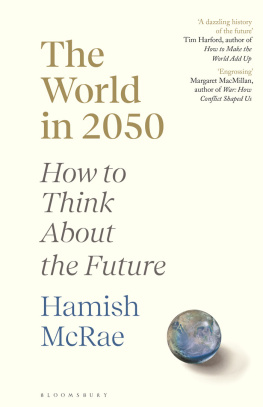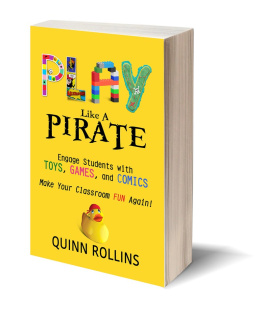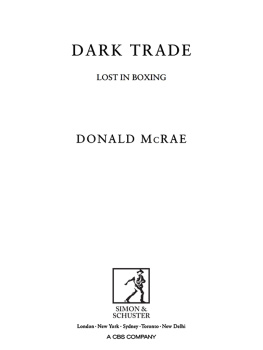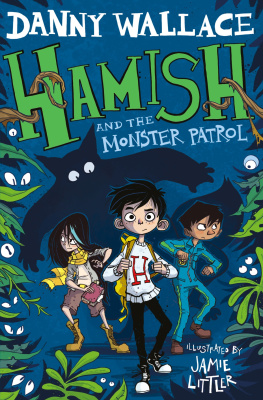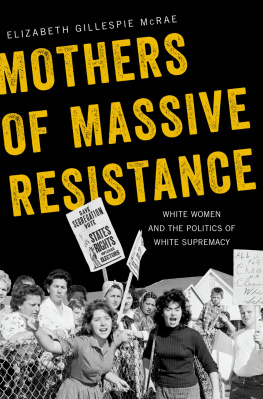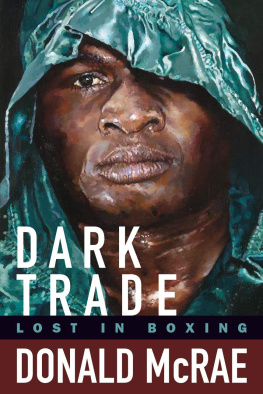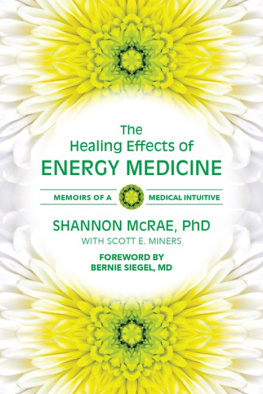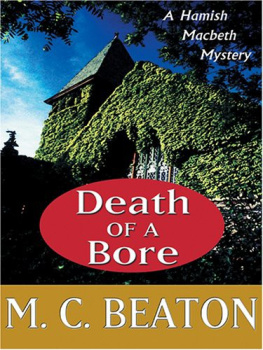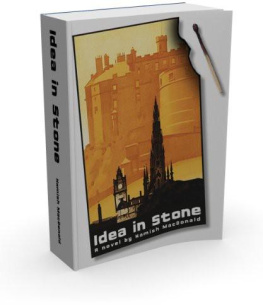Hamish McRae - The World in 2050: How to Think About the Future
Here you can read online Hamish McRae - The World in 2050: How to Think About the Future full text of the book (entire story) in english for free. Download pdf and epub, get meaning, cover and reviews about this ebook. year: 2022, publisher: Bloomsbury, genre: Politics. Description of the work, (preface) as well as reviews are available. Best literature library LitArk.com created for fans of good reading and offers a wide selection of genres:
Romance novel
Science fiction
Adventure
Detective
Science
History
Home and family
Prose
Art
Politics
Computer
Non-fiction
Religion
Business
Children
Humor
Choose a favorite category and find really read worthwhile books. Enjoy immersion in the world of imagination, feel the emotions of the characters or learn something new for yourself, make an fascinating discovery.
- Book:The World in 2050: How to Think About the Future
- Author:
- Publisher:Bloomsbury
- Genre:
- Year:2022
- Rating:5 / 5
- Favourites:Add to favourites
- Your mark:
- 100
- 1
- 2
- 3
- 4
- 5
The World in 2050: How to Think About the Future: summary, description and annotation
We offer to read an annotation, description, summary or preface (depends on what the author of the book "The World in 2050: How to Think About the Future" wrote himself). If you haven't found the necessary information about the book — write in the comments, we will try to find it.
The World in 2050: How to Think About the Future — read online for free the complete book (whole text) full work
Below is the text of the book, divided by pages. System saving the place of the last page read, allows you to conveniently read the book "The World in 2050: How to Think About the Future" online for free, without having to search again every time where you left off. Put a bookmark, and you can go to the page where you finished reading at any time.
Font size:
Interval:
Bookmark:

The World in 2050
For my grandchildren, Magnus, Sebastian, Grace, Leonard and Frankie, and in memory of little James
By the same author
The World in 2020: Power, Culture and Prosperity
Capital City: London as a Financial Centre
(with Frances Cairncross)
What Works: Success in Stressful Times

Contents
Introduction:
The Journey from 2020
Why should anyone take predictions about the future seriously when so many in the past have turned out to be not just wrong, but absurdly so? That is the core challenge that this book faces. I believe it is worth tackling that challenge for three reasons.
First, if one is looking one generation ahead, twenty-five or thirty years, many of the broad economic trends that will dominate this period are already evident. Beyond that we move into science fiction. Thus we already know roughly how many people will be alive in 2050 and more or less where they will live. We can judge which countries and regions are likely to grow swiftly and which are likely to lose pace. We can see in broad outline the technologies that will drive economic development, though their details and the pace at which those technologies will be adopted are both hard to predict. And we can make some judgements about political and social developments, though turning points are always hard to catch. After all, we are helped by the intergenerational mathematics. The key decision-makers of the next thirty years are alive now, perhaps still studying in schools or universities, or maybe starting out on their chosen careers. Their ideas will shape the world.
Second, all of us make assumptions about the way the world will develop, certainly implicit and often explicit. For example, the careers we choose are shaped to some extent by our vision of the future. We dont choose jobs that look like being replaced by robots. Most of us are aware that we may have to retrain several times during our working careers. So to paint a picture of the future is to try to help people clarify their own ideas and expectations. Even if people disagree with some of the predictions, as of course they will, at least they will have tested their ideas against an alternative vision. One of the humbling experiences I have had a few times over the past quarter-century is that people have come up to me and said that my book The World in 2020 , published in 1994, changed their life. They made choices they would not otherwise have made, and the fact that they were prepared to acknowledge this suggests that they thought those decisions were good ones. At least I hope so. If this book can help people put their expectations into some sort of order, then it will be doing something useful.
That leads to the third point: I have done this before. We are now beyond 2020 and can see to what extent that sketch of what the world might look like does indeed resemble the reality. I have tried to learn from the bulls-eyes always satisfying to have a few of those but even more from my mistakes.
That book envisaged a world that was more prosperous, healthier, better educated and informed, and more peaceful than in the early 1990s or indeed in any previous period of recorded history. This has proved broadly correct. None of the unbearable catastrophes that might have made all predictions meaningless, such as a nuclear war, have occurred. Even the Covid-19 pandemic seems likely to eventually be brought under control, albeit at massive economic and human costs. There was indeed a warning of a pandemic in that book, though in the context of the AIDS epidemic still raging in the early 1990s. But the book also warned that it would be difficult for the advanced countries to continue to raise the living standards of their citizens, and that the Wests liberal democracies would be under pressure as a result. That, too, has been the case, though I suspect that the economists are at fault in their measurement of living standards, and fail to take into account the benefits of the communications revolution. As for the emerging world, the book if anything underestimated the progress it would make. That China would boom was obvious, though it has done even better than I had expected. Less obvious was Indias emergence as a more buoyant economy, albeit an uneven success story, and I quite failed to appreciate how it would leap forward and by 2020 be growing even faster than China.
Economics has a powerful impact on politics and one of the great themes of this book is that China will pass the US to become the worlds largest economy and that that shift of economic power will generate massive political tension between these two great nations. But there are other forces beyond economics that drive political change, and these include identity, religion and nationalism. The long hand of history hangs over everything, and politicians have to try to manage the conflicting wishes and aspirations of citizens in that context.
So it was possible back in the early 1990s to see that the UK would feel increasingly uncomfortable with its relationship with Europe, and that it might leave the European Union and seek to negotiate a free trade deal instead. I did acknowledge it might be very difficult to do so. But sometimes the outcome of a known tension flips the other way. I felt there was an even chance that Scotland would have become independent by 2020. As it turned out its electorate has chosen not to follow that path, at least not on the timescale envisaged. I feel it remains an even chance, maybe a little less than that.
As far as the EU is concerned, it has so far proved more cohesive that I had expected, for I had envisaged it would be more of a multi-speed Europe, with an inner core of founder states and an outer ring around it. But there will never be a final form for Europe, and it may be that the pressures against greater integration will dominate the next thirty years. Political structures have to evolve to meet the aspirations of each generation, and those aspirations change.
You can see this in the US. It was clear even in the early 1990s that there would be some sort of populist challenge to the vested interest groups, against what I wrote was the power of the medical and legal establishments, of the National Rifle Association, of the Hollywood moguls, even of the liberal press. I was lucky in my timing, for I expected it to be in the second decade of this century, but as I acknowledged it was impossible to see what form this radical shift in political attitudes would take. Put it this way: it was impossible to predict that Donald Trump would be president, but it was not difficult to identify the forces that led to his election.
What about the other forces that drive change? First and foremost, what about the pressure on the environment? It was easy to predict that concern about the environment would be greater in 2020 than it was in 1990. Population pressure and the explosion of growth in the emerging world would see to that. It was easy, too, to see that local pollution would be tackled with some success in the developed world, but that worries about climate change would climb. One of the great questions now is how grave is the threat of global warming, and this book seeks to make some judgements on that. If the climate outlook appears more serious now than it did a quarter of a century ago, other fears such as a shortage of oil and gas seem less pressing. We remain a global economy driven mainly by fossil fuels, but renewable sources of energy are building fast. By and large, however, the concerns of 1990 remain the concerns of 2020. The world is just rather more frightened now than it was then and, I judge, rightly so.
Next pageFont size:
Interval:
Bookmark:
Similar books «The World in 2050: How to Think About the Future»
Look at similar books to The World in 2050: How to Think About the Future. We have selected literature similar in name and meaning in the hope of providing readers with more options to find new, interesting, not yet read works.
Discussion, reviews of the book The World in 2050: How to Think About the Future and just readers' own opinions. Leave your comments, write what you think about the work, its meaning or the main characters. Specify what exactly you liked and what you didn't like, and why you think so.

